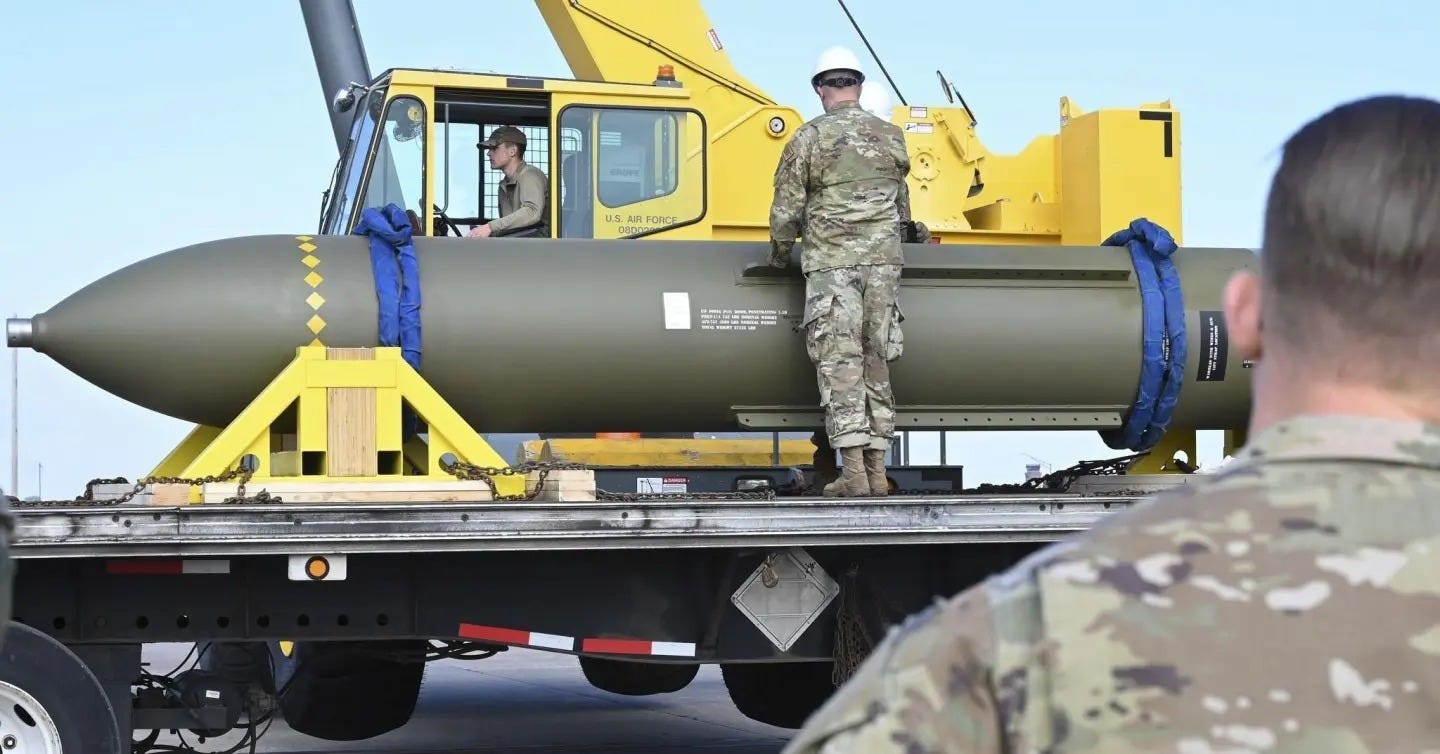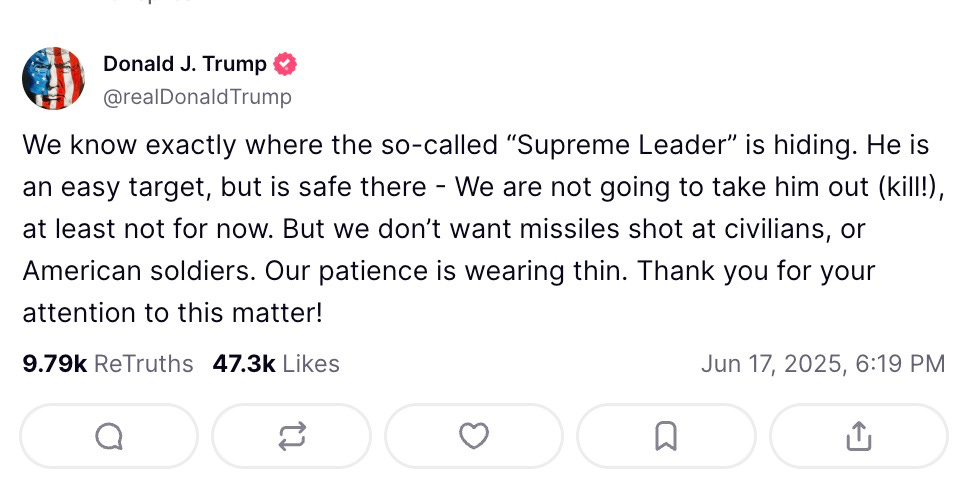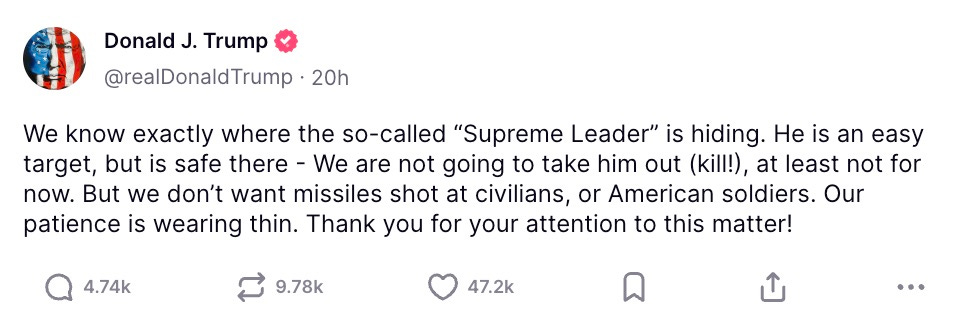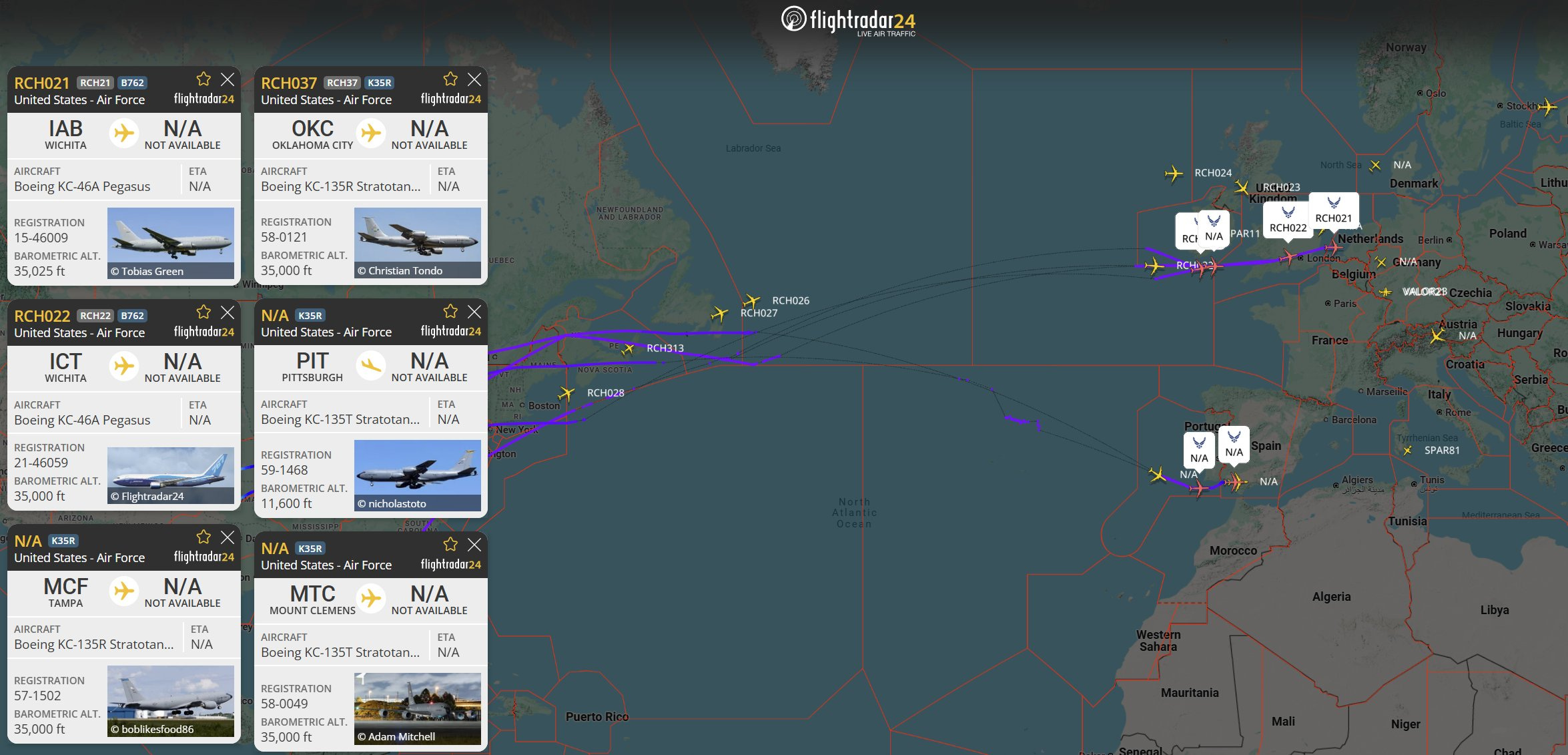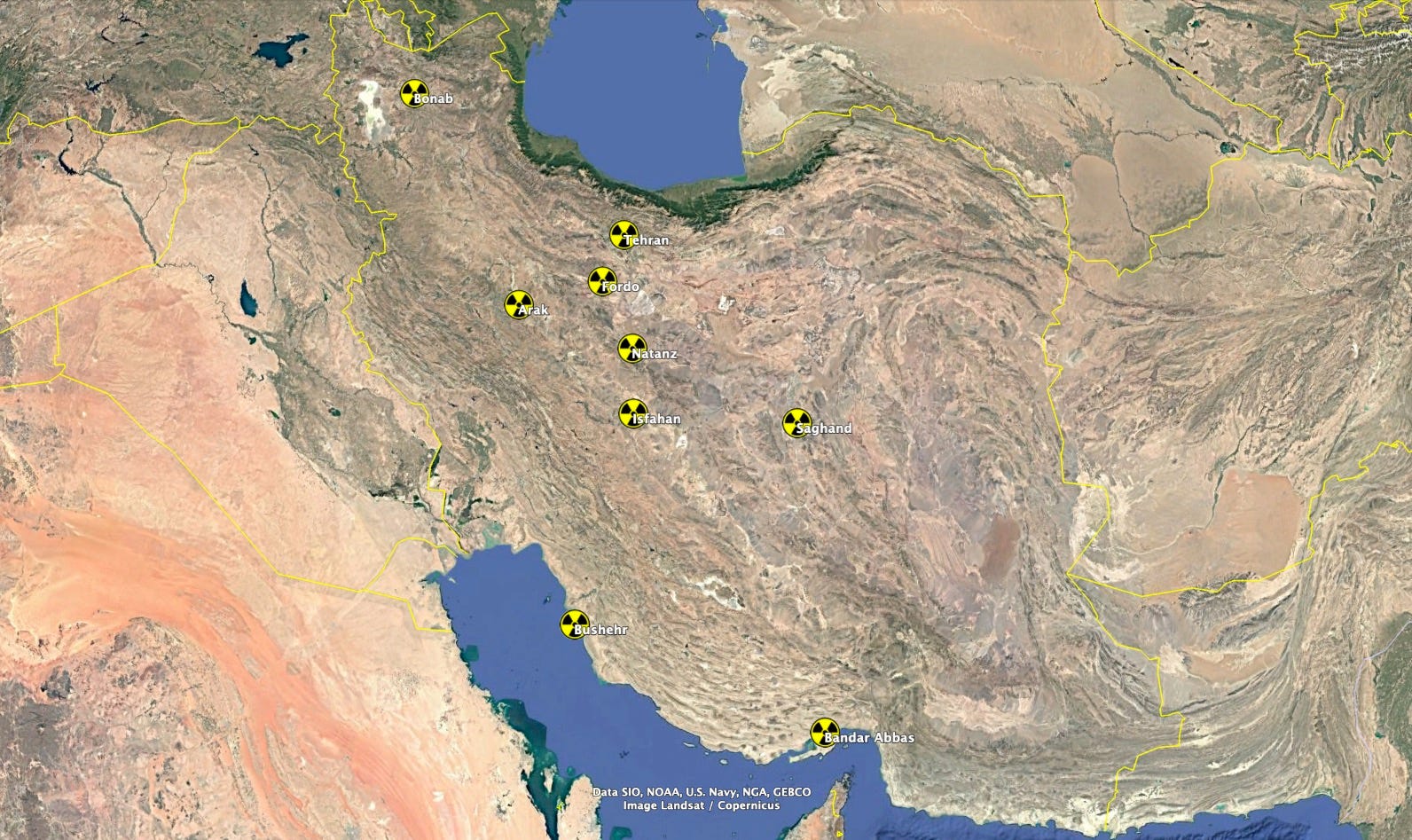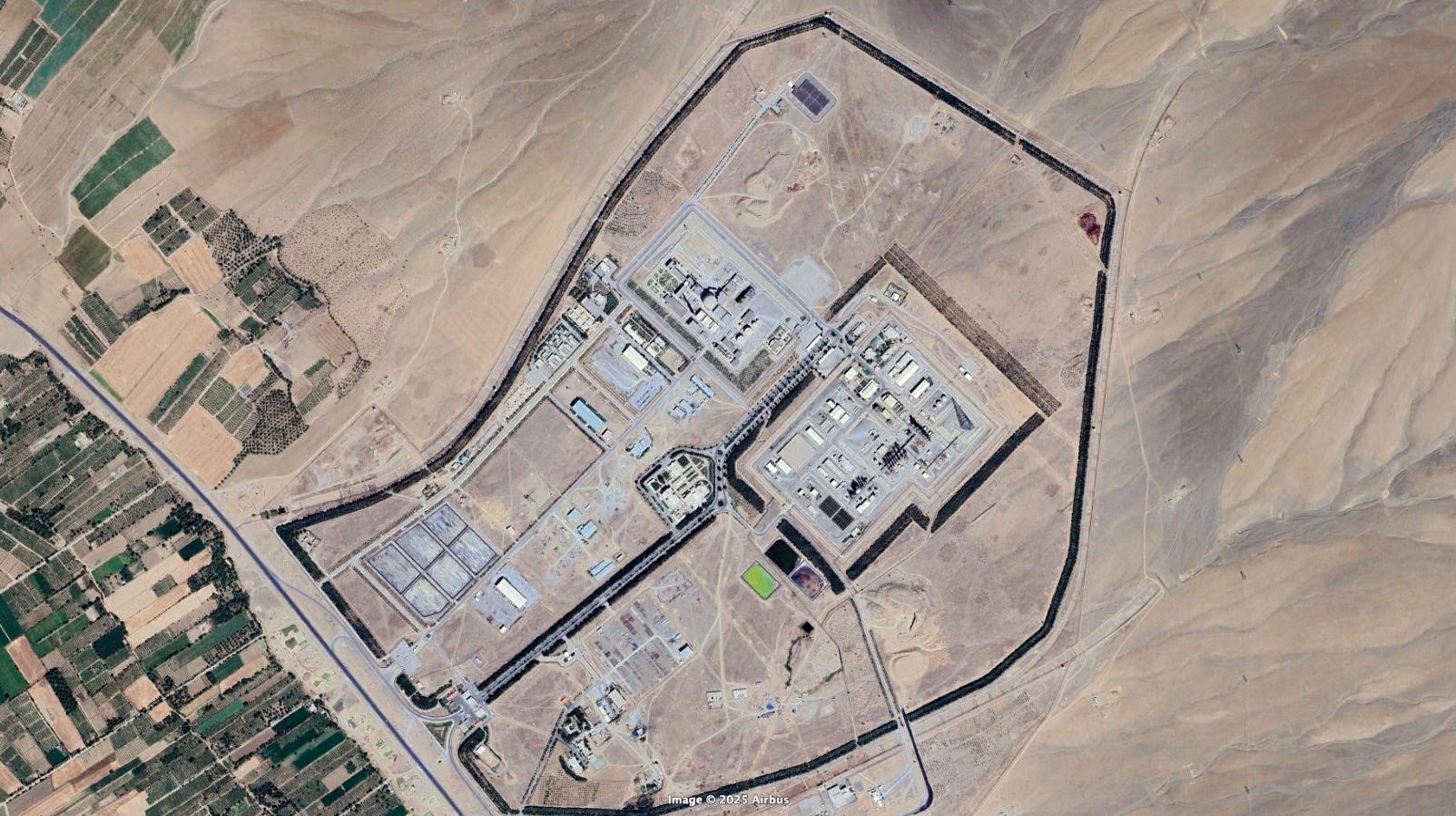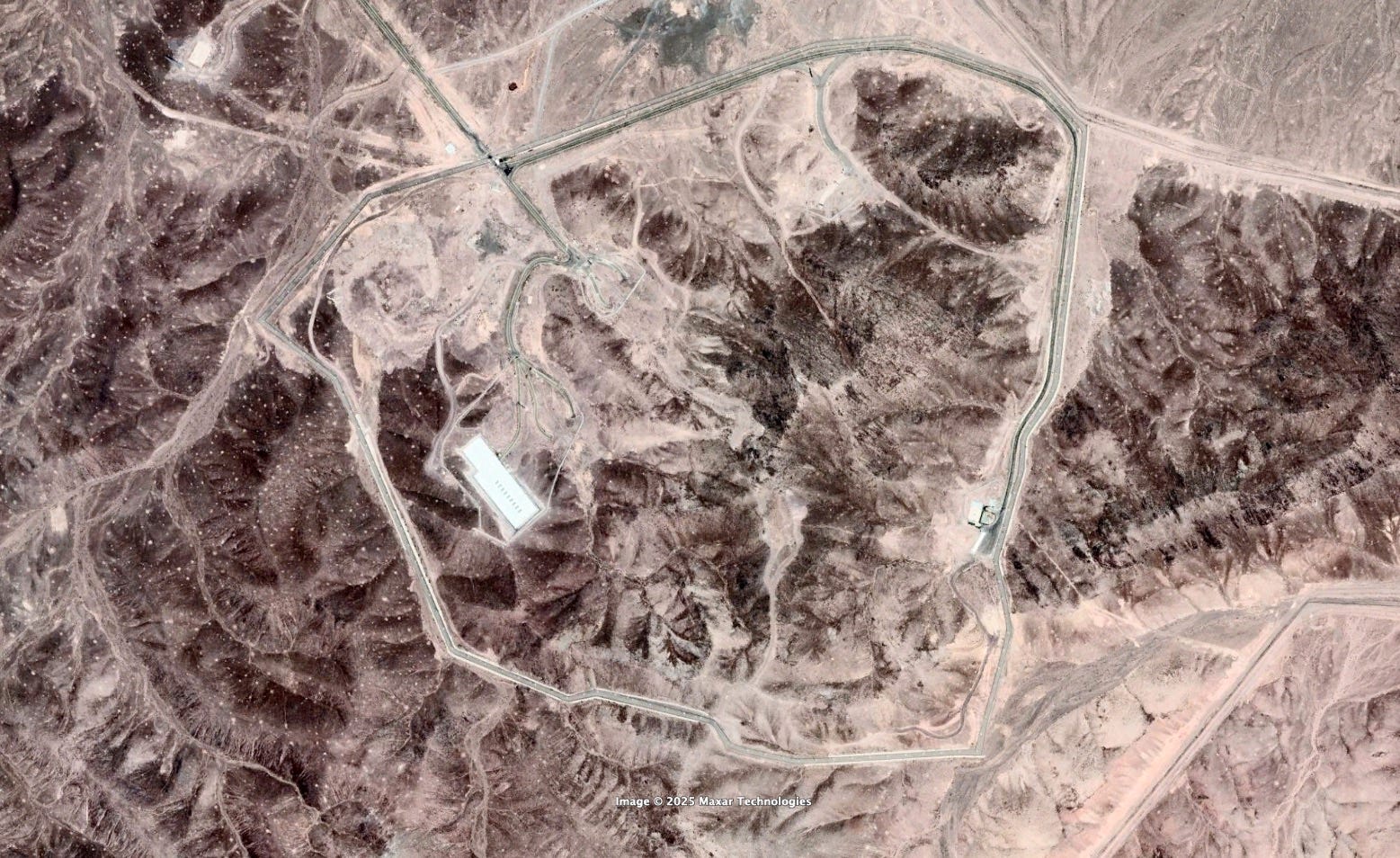Tracking the escalation: U.S. Air Force mobilises as Israel targets Iran's nuclear core
Use of U.S. bunker-buster bomb looms over Iran conflict as American jets move into Middle East
As the deadly conflict between Israel and Iran escalates, the two nations continue to exchange strikes after Israel launched an operation on June 13 aimed at destroying the Islamic Republic's nuclear programme.
Israel’s bombardment of Iran has targeted nuclear installations, scientists, and high-ranking military officials, demonstrating the power of its military, but more importantly, its intelligence gathering capabilities within the country.
With the conflict showing no signs of abating, U.S. President Donald Trump added fuel to the fire on June 17 by saying that the United States had "complete and total control of the skies over Iran", adding that the country's defensive capabilities were no match for the “American made, conceived, and manufactured ‘stuff’.”
Trump sent a stern warning to the Islamic Republic, claiming the United States knew exactly where the "so-called ‘Supreme Leader’” Ali Khamenei was hiding. He posted: “We are not going to take him out (kill!), at least not for now.”
“But we don’t want missiles shot at civilians, or American soldiers. Our patience is wearing thin. Thank you for your attention to this matter!” Trump warned.
Movements of the U.S. military
Trump's warnings to Iran came at the same time that the U.S. military was relocating dozens of aerial refuelling tankers—used to refuel warplanes and bombers—from bases in the U.S. to locations in Europe. This led to speculation about whether the United States was preparing to join Israel in its offensive against Iran's nuclear sites.
On June 16, real-time aircraft flight tracking service Flightradar24 said it had observed “about 30 US Air Force aircraft” departing the U.S. bound for Europe, adding that most were KC-46A Pegasus planes and at least four were KC-135 Stratotankers. Some of them later landed at U.S. air bases in countries including Spain, the United Kingdom, and Italy.
On June 20, we observed via flight trackers that several U.S. Air Force military transport planes were moving between Europe and the Middle East. Most of them were a model called the Boeing C-17A Globemaster III – which is a large military transport aircraft designed to carry heavy equipment and personnel.
Flight trackers also picked up multiple Lockheed C-5M Super Galaxy aircraft flying over Europe on June 20. This is the largest aircraft in the U.S. Air Force and among the largest in the world, capable of carrying large military vehicles along with dozens of personnel.
Several of these flights took off from air bases in Germany, the UK, Spain and Italy and flew over Saudi Arabia and Jordan before turning back, flight monitoring throughout Friday showed.
U.S. Secretary of Defence Pete Hegseth had already announced an increased deployment of tanker aircraft and warships to the Middle East, but no official comment was made about the deployment of fighter jets.
Earlier this week, 12 F-22 Raptor fighter jets, which the U.S. Air Force exclusively uses, landed at Lakenheath air base in the United Kingdom. Aviation spotters on social media reported on Friday that the same fighter jets were taking off in groups of four, accompanied by larger refuelling tankers. Aviation enthusiasts were live streaming the situation at Lakenheath on Friday morning as the F-22s took off to tail the larger tankers.
The time of each takeoff on the live stream matched the departure of three tankers with a GOLD callsign: GOLD03, GOLD23, and GOLD24. The live stream from Lakenheath captured the takeoffs of eight F-22s in two groups. The last four fighter jets were not captured on camera, and we couldn’t confirm whether they had also departed, as none of the fighter jets were detectable on flight tracking software. The takeoffs took place from both Lakenheath and Mildenhall, which are adjacent RAF sister bases.
The first section of F-22s appeared to be later accompanied by GOLD13 when GOLD03 had to turn back; flight trackers showed GOLD13 continued on as far as Sicily before turning back and landing at Morón de la Frontera in Spain. The others were also headed towards Spain at the time of writing.
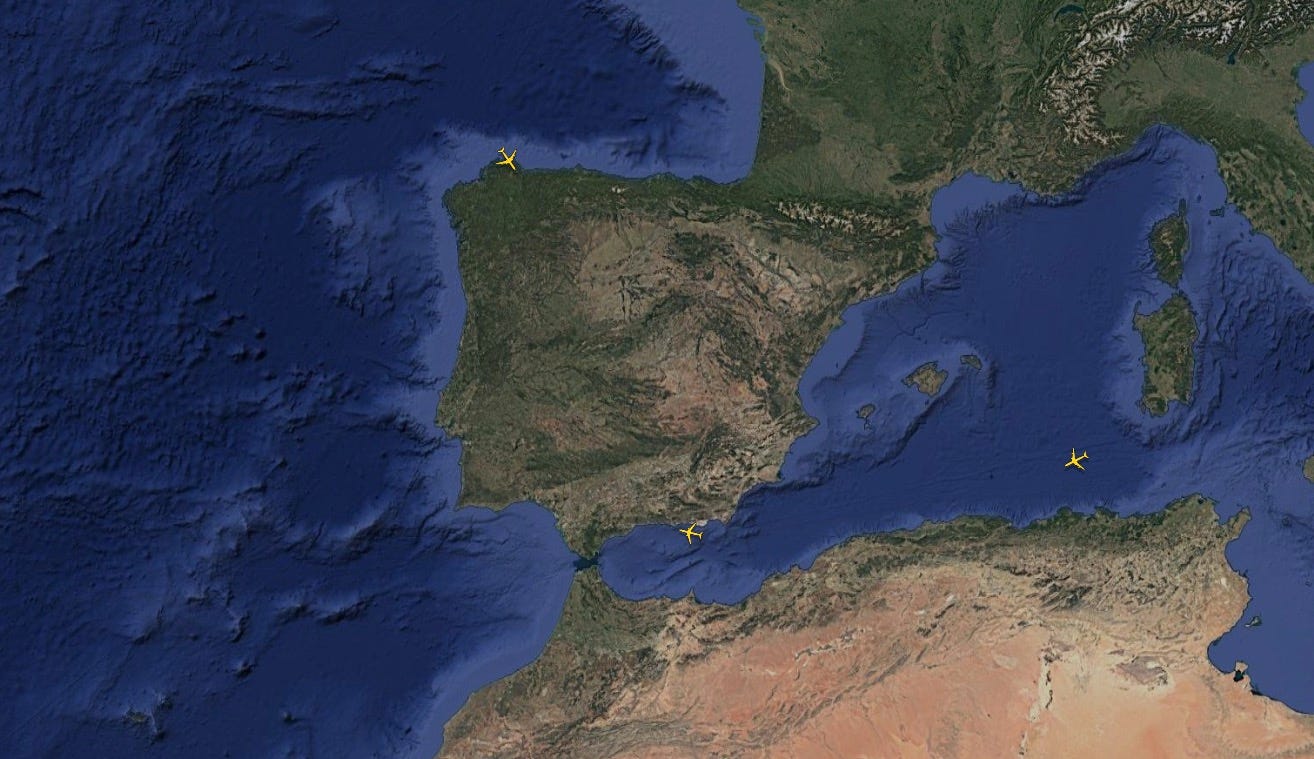
Most of the U.S. Air Force planes are flying over Europe with a generic callsign made up of letters and numbers to denote an airline. In the U.S. military, GOLD is one of a number of callsigns used to denote that the aircraft is on a Coronet movement mission with smaller planes that are not designed to carry enough fuel for long-distance flights. The tankers would be used to refuel the smaller jets, allowing them to travel longer distances without fuel stops.
Israeli strikes on nuclear installations
In the early hours of June 13, as strikes began across Iran, the Israeli military released a statement outlining what the action was all about.
It said: “A short while ago, following the directive of the political echelon, the IDF launched a preemptive, precise, combined offensive based on high-quality intelligence to strike Iran's nuclear program, and in response to the Iranian regime's ongoing aggression against Israel.”
According to the IDF, dozens of Israeli Air Force jets “completed the first stage,” which involved strikes on dozens of military targets, including nuclear targets, in different areas of Iran.
The statement acknowledged that there would likely be a response and warned civilians to follow any instructions that may be issued. Later the same morning, Israel declared a nationwide state of emergency, which is set to remain in place until at least the end of June.
IDF Spokesperson, BG Effie Defrin
When the initial strikes were launched, Iranian state media reported explosions at the country’s main uranium enrichment facility in Natanz. The IDF confirmed it had struck the facility, saying Natanz “has operated for years to achieve nuclear weapons capability and houses the infrastructure required for enriching uranium to military-grade levels”.
The Israeli military said the underground area of the site was damaged; this was said to contain a multi-storey enrichment hall with centrifuges, electrical rooms, and other infrastructure. The IDF also said some of the critical infrastructure outside that supports the operation of the plant was targeted.
On June 19, the IDF issued another statement, stating that it had struck the site once again.
Isfahan Nuclear Technology Centre
There was another nuclear site struck on June 13, with the IDF saying it attacked a facility in the Isfahan area of Iran, “guided by precise intelligence from the Intelligence Directorate”.
Israel said this site was used for a process known as the ‘reconversion’ of enriched uranium. “This is the stage after uranium enrichment in the nuclear weapons production process,” the IDF said.
According to the military, “the strike dismantled a facility for producing metallic uranium, infrastructure for reconverting enriched uranium, laboratories, and additional infrastructure”.
SPND agency headquarters
The Israeli military gave details of airstrikes it carried out in the early hours of June 15, which included the headquarters of the SPND project, also known as the Organisation of Defensive Innovation and Research. This is a research and development agency under the Iranian Ministry of Defence, and is roughly equivalent to the American agency DARPA, according to Iranian media.
Another IDF statement on June 18 also said it struck over 20 “military targets” in Tehran, including “research and development sites of the Iranian regime’s nuclear weapons development project”. They did not specify if this was another strike on the SPND headquarters or any other infrastructure associated with the project, but the description matches that of the previous mention of the agency.
On Friday, June 20, the Israeli military once again struck the SPND headquarters as part of a night of heavy strikes by more than 60 Air Force fighter jets across Tehran that used “approximately 120 munitions”. The series of strikes also targeted what the IDF said were missile manufacturing facilities and another site “producing a critical component of the Iranian regime’s nuclear weapons program”.
Israel has long claimed that the SPND has been working on the development of nuclear weapons, a position that has been backed by the United States, which even sanctioned people associated with it in 2019. But the scientific agency also works on other projects, including on testing kits and vaccines during the COVID-19 pandemic.
Israeli Air Force fighter jets struck another nuclear site on Thursday, June 19, the military said. That was a nuclear reactor in Arak, “including the structure of the reactor's core seal, which is a key component in plutonium production,” according to the IDF.
The nuclear reactor was not in use. Construction on it began in 1997 but was halted in 2015 under a nuclear deal between Iran and the international community. The reactor’s core was removed and filled with concrete under the deal. But in 2024, Iran informed the UN’s watchdog, the International Atomic Energy Agency, that it planned to begin operating the plant in 2026. An IAEA report said minor civil construction work was going on at the site in mid-May.
On Thursday’s strike at the facility, the IAEA said it had information that the heavy water research reactor formerly known as Arak but now named Khondab, was struck on June 19.
The IAEA said it was not operational and contained no nuclear material, so there were no radiological effects. There was nothing to suggest the adjacent Khondab heavy water plant was hit, the agency added.
Centrifuge production in Tehran & unspecified sites
On June 18, the Israeli military said the Air Force struck a facility being used to make centrifuges in Tehran, which it said was “designed to enable the Iranian regime to expand the scale and speed of its uranium enrichment to develop nuclear weapons”.
The IDF repeated its claim that the Iranian regime was enriching uranium for nuclear weapons, adding: “Nuclear power for civilian use does not require enrichment at these levels.”
Iran's uranium enrichment facility at Fordo and the possibility of a U.S. ‘bunker buster’ strike
Since Israel commenced its coordinated strikes targeting Iranian nuclear facilities, speculation has mounted regarding the Islamic Republic's underground uranium enrichment facility at Fordo, located 30 kilometres (20 miles) north of the Iranian city of Qom.
Built deep within a mountain, the fortified nuclear facility's existence was only disclosed to the International Atomic Energy Agency (IAEA) by Iranian officials late in 2009 after then-U.S. President Barack Obama said the site had been under U.S. surveillance.
Initially, Iran stated that the facility's purpose was to produce uranium hexafluoride and that the site would house approximately 3,000 centrifuges, with enrichment operations commencing at the site in December 2011.
A month later, the IAEA confirmed that it had started producing uranium enriched to 20% for medical purposes, adding that the material remained under the agency's containment and surveillance at the time.
As part of the 2015 Joint Comprehensive Plan of Action (JCPOA), also known as the Iran nuclear deal, Iran agreed to certain measures in exchange for sanctions relief. Specifically, Iran committed not to commission or fuel the reactors at its nuclear facilities, including the Fordo facility. Additionally, it agreed to eliminate its stockpile of medium-enriched uranium for a period of 13 years and to limit uranium enrichment to a maximum of 3.67% for 15 years.
In 2018, during his first term as president, Donald Trump announced the U.S. withdrawal from the Joint Comprehensive Plan of Action (JCPOA) and reinstated sanctions on Iran later that year. In 2019, Iran announced that it had breached the limit set on its stockpile of low-enriched uranium. In January 2020, the country declared it would no longer adhere to the JCPOA's limitations on enrichment but would continue to coordinate with the International Atomic Energy Agency.
Constructed in 2006, the Fordo facility is located approximately 80 metres (260 feet) underground. Officials stated that the decision to build the facility underground was made due to threats from Israel to conduct air strikes on such installations.
The depth at which the facility sits has raised speculation in recent days that Israel does not have the military arsenal at its disposal to disable activities at the site, despite claims by Israeli Prime Minister Benjamin Netanyahu that the country is capable of hitting all of Iran’s nuclear facilities, including Fordo.
“We will achieve all our objectives and hit all of their nuclear facilities. We have the capability to do that," Netanyahu said in an interview with state broadcaster KAN.
Despite Netanyahu's claims, the Fordo facility is widely considered to be out of reach of all but American-made “bunker-buster” bombs.
Developed for the United States Air Force by Boeing, the GBU-57 Massive Ordnance Penetrator (MOP) is a precision-guided bomb weighing approximately 13,600 kg (30,000 pounds). Designed to destroy heavily fortified and deeply buried targets, the GBU-57 is the heaviest non-nuclear weapon in the U.S. arsenal.
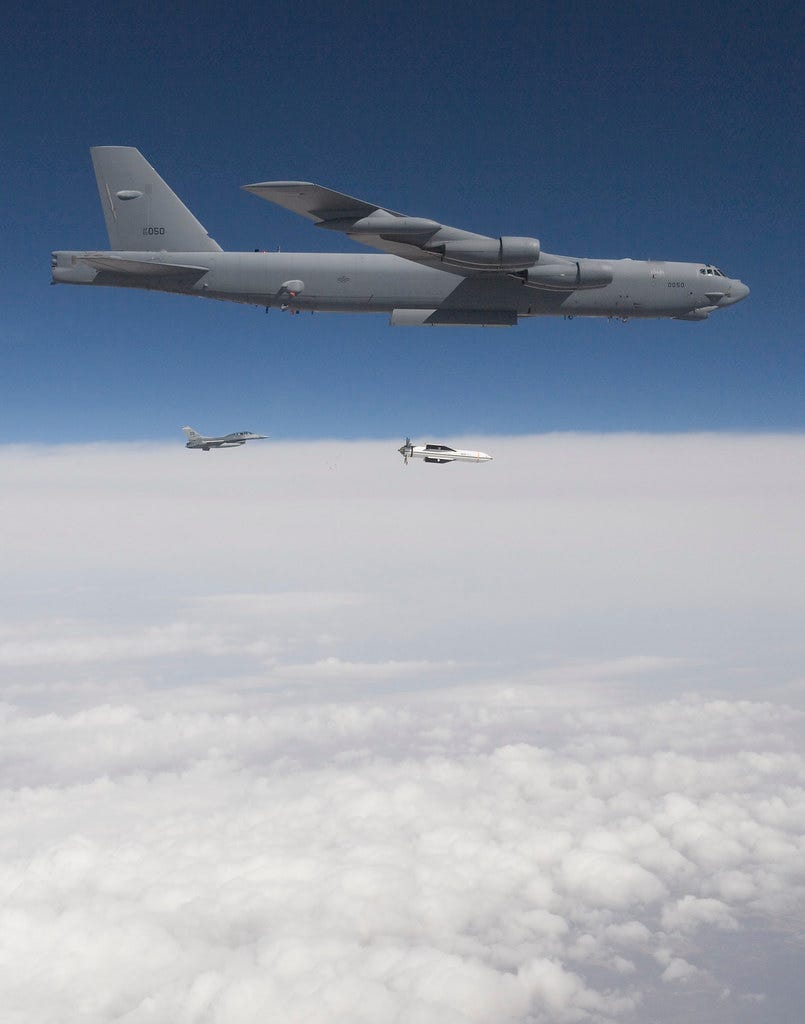
Unlike conventional bombs that explode upon impact, the GBU-57 features a "smart fuze" known as the Large Penetrator Smart Fuze (LPSF). This technology allows the bomb to detonate only after it reaches a predetermined depth, which maximises its destructive effects on underground structures.
The GBU-57 employs a combination of Global Positioning System (GPS) and Inertial Navigation System (INS) for precise targeting, enabling it to strike within metres of its intended impact point.
Measuring 20.5 feet (6.2 m) in length, its size and weight limit its deployment to strategic bombers, with the B-2 Spirit being the only currently operational aircraft capable of carrying it, of which the U.S. military has 19 in its operational fleet.
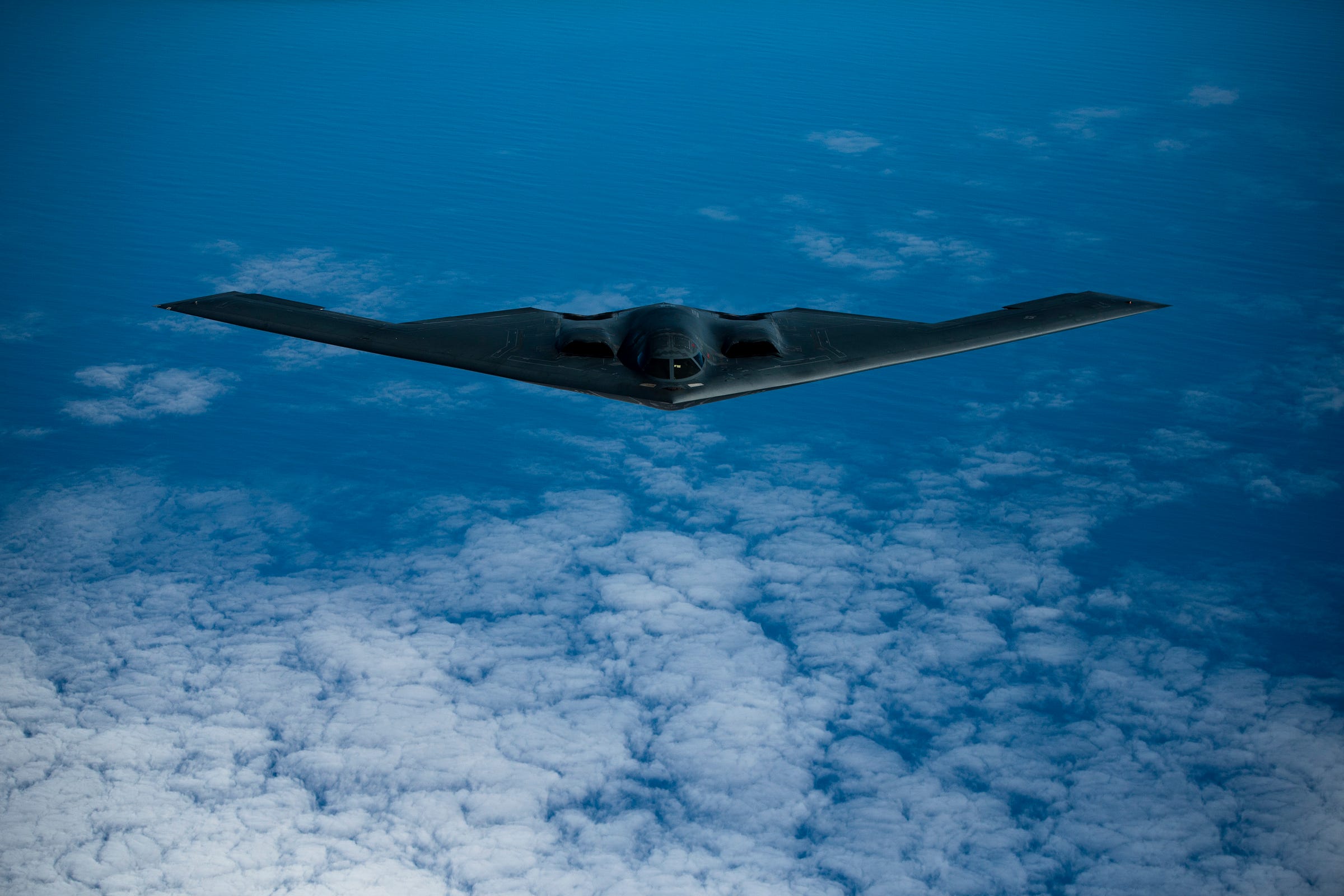
At the time of writing, there was no official confirmation from the White House if the U.S. was to join Israel in military action against Iran.
Is Iran developing a nuclear weapon?
In its initial statement justifying those first deadly strikes, the IDF made a number of claims about the status of Iran’s nuclear programme, saying that while “the Iranian regime has been waging a direct and indirect campaign of terror against the State of Israel, by funding and directing terrorist activities via its proxies across the Middle East”, it has been “advancing toward obtaining a nuclear weapon”.
Throughout Friday the 13th and the days that followed, the Israeli military continued to release information on what it calls the “Iranian Nuclear Project”.
In another statement, the IDF said that for the first time, it was “revealing” that the Iranian regime was advancing a “secret plan for the technological advancement of all parts of the development of a nuclear weapon”. Under this plan, the IDF said that senior nuclear scientists in Iran have been working to secretly develop all components needed for developing a nuclear weapon.
“In recent months, this program has accelerated significantly, bringing the regime significantly closer to obtaining a nuclear weapon. This is clear evidence that the Iranian regime is operating to obtain a nuclear weapon.”
These renewed comments from Israel are nothing new; for years, Israel has been warning the world that Iran was on the precipice of acquiring nuclear weapons. For its part, Iran has repeatedly insisted that its nuclear programme is strictly for civilian use in power plants. Over decades, it has denied it is pursuing the development of nuclear weapons.
Despite all this, the Iranian regime announced on June 12 that it was scaling up its enriched uranium production, as talks with the U.S. over a nuclear deal stalled. A fortnight earlier, the IAEA had sounded the alarm that Iran was increasing its capacity to enrich uranium.
On the U.S. side, there was conflicting information coming out of the Trump administration. The central question that will determine whether or not the U.S. will join the Israeli campaign is: How close is Iran to actually acquiring a nuclear weapon?
In March, Donald Trump’s Director of National Intelligence Tulsi Gabbard said that according to the intelligence community, “Iran is not building a nuclear weapon”. She added that the Iranian supreme leader has not authorised the resumption of the nuclear weapons program that was suspended in 2003.
But a split appeared in the U.S. administration when Donald Trump was asked whether he agreed with Gabbard’s assessment. He told journalists: “I don’t care what she said. I think they were very close to having one [a nuclear weapon].”
Trump later said that Iran was “a few weeks” away from having a nuclear weapon, aligning him more with Benjamin Netanyahu than with those inside his own administration. The official U.S. intelligence assessment of the Iran nuclear programme has not changed since March, but American news outlets said that the U.S. intelligence on the region is in part based on information from Israel’s intelligence services.
For at least 30 years, Israeli Prime Minister Benjamin Netanyahu has been warning the international community that Iran has been years or months away from developing a nuclear weapon. Thirteen years ago, he famously held up a cartoon of a bomb in the UN General Assembly chamber during a speech in which he warned that Iran was closer than it had ever been to harnessing atomic weapons. There are conflicting intelligence reports about Iran’s true nuclear prowess, but in 2025, the issue threatens to plunge the Middle East and the U.S. into yet another major conflict.




